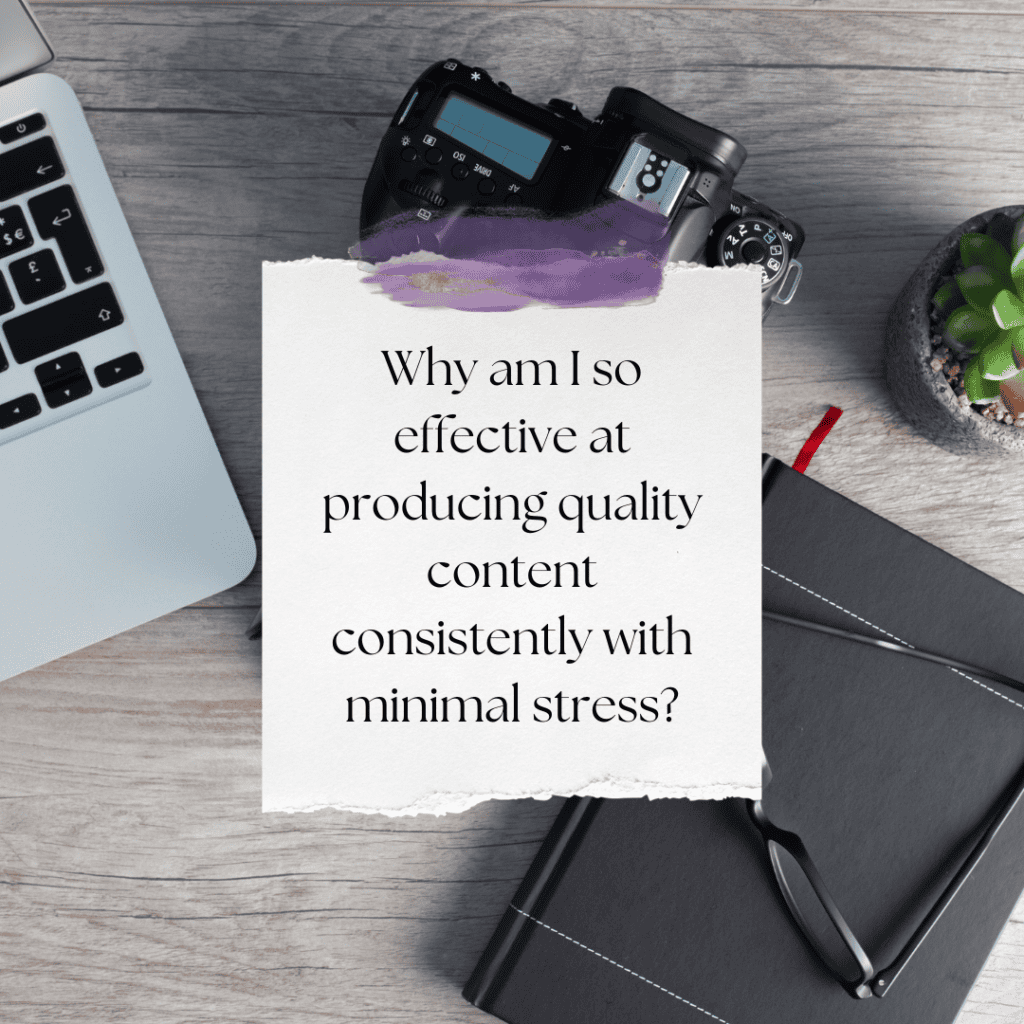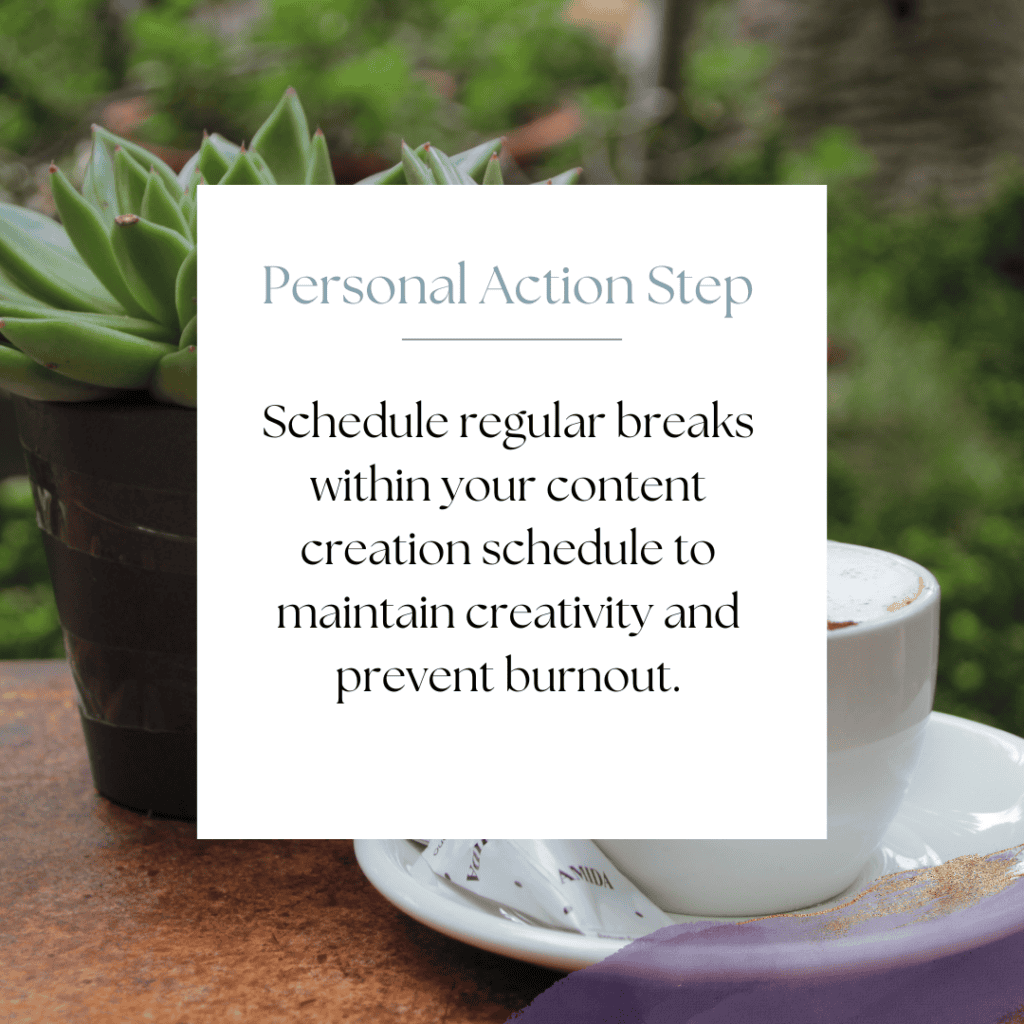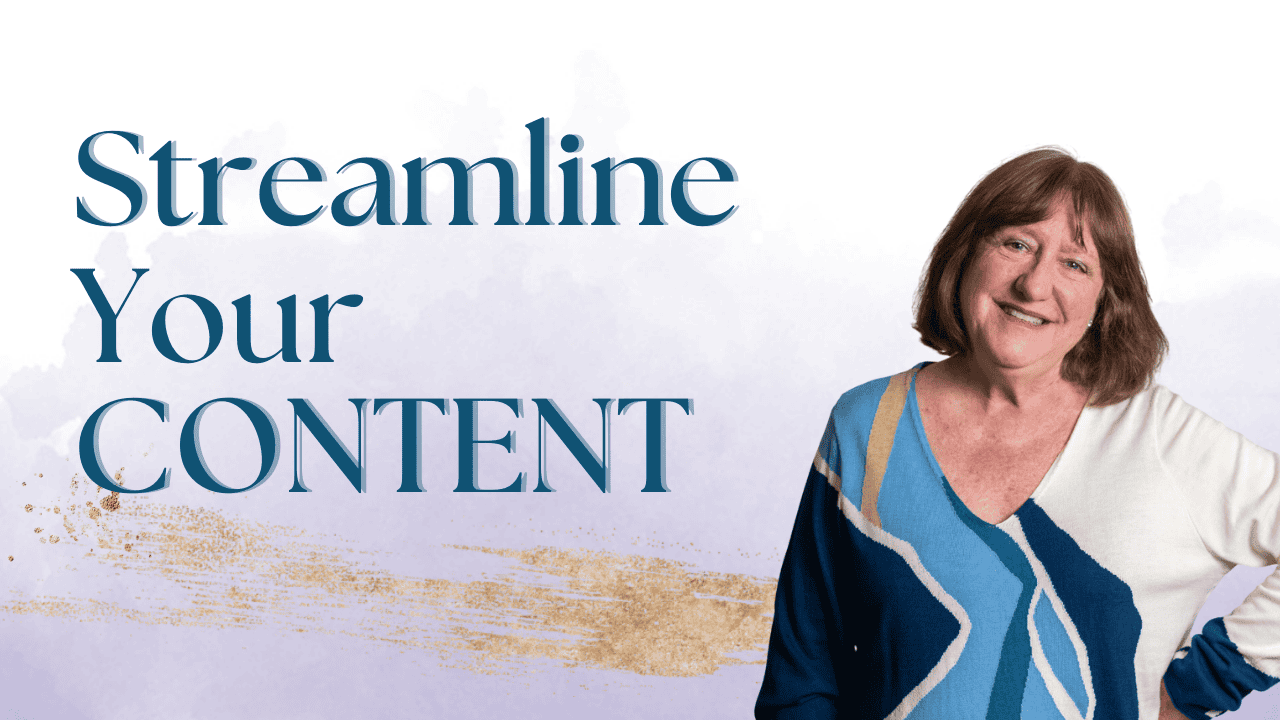Hey there! Kathy here.
A content planning calendar is your secret weapon to streamline your content strategy and make a bigger impact with less effort. As a solopreneur, it can be overwhelming trying to keep track of all your content ideas, deadlines, and goals. But with one simple calendar, you can plan ahead, stay organized, and ensure your content not only reaches your audience but also resonates with them. In this blog post, I’m going to show you how to create a system that turns your content into valuable connections, helping you grow your business and save time!
“Simplify to amplify your content’s impact.”
– Kathy Schneider
Whether you’re a seasoned content creator or just starting, having a clear and organized approach can dramatically enhance your productivity and output. Without a solid plan, it’s easy to get lost in the chaos of content creation, leading to missed deadlines or inconsistent messaging. That’s where a content planning calendar comes in – it allows you to visualize your content strategy in advance, ensuring that everything you produce is aligned with your business goals. With this kind of structure in place, you can confidently create content that not only speaks to your audience but also moves your business forward.
This Week’s Afformation:

The beauty of a content planning calendar is that it’s fully customizable to fit your unique business needs and lifestyle. Whether you prefer monthly, weekly, or even daily planning, having one place where you can schedule blog posts, social media updates, and other content activities will save you time and stress. Plus, it helps you stay consistent, ensuring that your audience is always engaged and your business stays top of mind.
Your Content Planning Calendar for Maximum Efficiency
In this video, I show you how to master content planning using just one calendar, making the process as efficient as it is effective.
**Be sure to watch the video where I walk you through:
- Setting Up Your Master Content Calendar: Centralize all your content tasks to enhance visibility and control.
- Balancing Content Types: Mix long shelf-life content (like blogs and YouTube videos) with short shelf-life updates (like social media posts) for dynamic engagement.
- Batching and Scheduling: Learn how to batch similar content, reducing time spent and increasing productivity.
- Quarterly Reviews: Regularly adjust your strategy based on performance data and audience feedback to keep your content fresh and relevant.
Step-by-Step Guide to Building Your Content Planning Calendar
Now that you understand the importance of organizing your content creation process, let’s dive into how you can effectively set up your content planning calendar. By breaking down your content into both long and short-shelf-life categories, you can create a balanced, efficient strategy that works across multiple platforms. These steps will help you plan and schedule your content in a way that maximizes your impact, ensures consistency, and saves you time. Let’s get started!
How to Set Up Your Content Planning Calendar for Success

Decide Where to Publish
Start by determining where you’ll publish your content. You need to strike a balance between long shelf-life content, like blogs, YouTube videos, podcasts, and Pinterest, and short shelf-life content, like Instagram, Facebook, and TikTok. Long shelf-life content should be your foundation, as it continues to work for you long after it's published. For example, a YouTube video can attract views and generate leads for years, making it a highly efficient content strategy. Schedule regular uploads for these platforms – like every Tuesday for YouTube – and repurpose the content into different formats, such as blog posts, Pinterest pins, or podcast episodes.

Repurpose Your Long Shelf-Life Content
Once you’ve created your long-form content, repurpose it! This is a great way to maximize your content’s impact without constantly creating new material. For example, a YouTube video can be turned into a blog post, a podcast episode, and even social media posts. Repurposing ensures that your content reaches a broader audience across different platforms while saving you time. Be sure to schedule these tasks ahead of time in your calendar so they’re aligned and ready for consistent publication.

Plan Short Shelf-Life Content for Engagement
For short shelf-life content, like posts on Instagram, Facebook, and TikTok, focus on creating quick, engaging pieces that maintain daily or weekly engagement with your audience. These posts are great for staying visible and “showing up” for your followers. The key is to batch these posts so you’re not overwhelmed with daily content creation. Schedule these posts in advance to ensure you’re staying consistent without taking up too much time in your week.

Always Include a Call-to-Action
Every piece of content you create should include a call-to-action (CTA). Whether it’s directing people to your email list, encouraging them to follow you on social media, or guiding them to a landing page, a strong CTA helps convert casual traffic into committed followers and potential clients. Make sure every piece of content has a clear action for your audience to take!

Set Up a Google Calendar for Content
To keep everything organized, create a new Google Calendar named “Content Master.” This will be your central hub for all content activities. I recommend batching five weeks of content at a time to stay ahead without feeling overwhelmed. Break your tasks into batches:
- Batch content prep and script your YouTube videos
- Batch record your YouTube and write blog copy
- Batch social media content
- Batch emails to your list
By batching your content creation, you stay ahead of schedule and ensure consistency.

Schedule Quarterly Reviews
Finally, don’t forget to schedule quarterly reviews of your content calendar. This will allow you to adjust your strategy based on performance and audience feedback, ensuring your content stays relevant and effective. Regular reviews help you optimize your content planning, improve engagement, and refine your overall content strategy.
Weekly Action Steps
Now that you have your content planning calendar set up and organized, it’s time to break it down into actionable steps that keep you moving forward. Consistency is key, and by turning your scheduled content into weekly action steps, you’ll ensure you're staying productive and focused on your goals.
Firstly, one Action Item for your business:

Next, here's one Action Step for your personal life:

I'd like to encourage you to consider these Weekly Action Steps seriously. They are provided to take the lesson in this post and make it actionable. I'm here to support you on your journey toward peak productivity, helping you work smarter, not harder. With each step, you'll build new habits, refine your workflow, and unlock the full potential of your productivity.
Ready to Achieve Your Goals? Check out Vision Mastery Accelerator
If you’re ready to start setting goals and actually achieving them, while intentionally getting into a rhythm that allows time for your top priorities, crafting a vision, and watching it come to fruition right before your eyes, Vision Mastery Accelerator is for you!

Closing Thoughts: Mastering Your Content Planning Calendar for Success
By creating and maintaining a content planning calendar, you’re setting yourself up for consistent content creation, greater productivity, and a more organized approach to growing your business. With everything mapped out in advance, you can focus on delivering value to your audience while ensuring that your content stays aligned with your goals. Consistency and strategy are key – so start using your calendar today to simplify your process, boost your impact, and make content creation a breeze!
Helpful Resources:
- Year in a Snapshot: Why Entrepreneurs Need This Calendar – KathySchneider.com/86
- Your Business, Your Rules: Build a Week That Works for You – KathySchneider.com/87
- Schedule Integrity: Keeping Your Promises as a Solopreneur – KathySchneider.com/88
- From Plan to Profit: Leveraging Calendars for Promotions & Sales – KathySchneider.com/89


